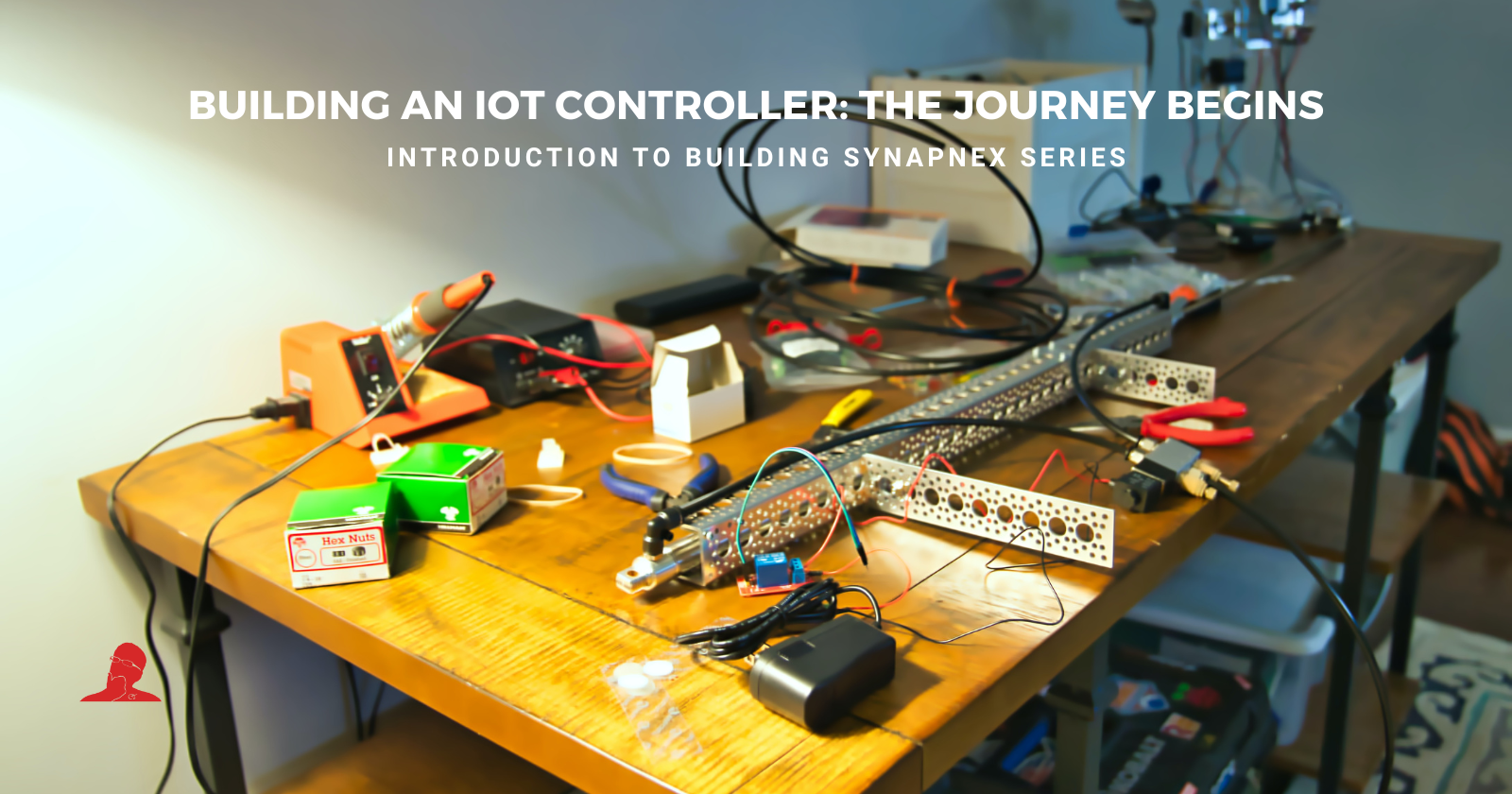Building an IoT Controller: The Journey Begins
 Chrispine Tinega
Chrispine Tinega
The Internet of Things (IoT) is rapidly changing how we interact with the physical world. Connecting everyday objects to the internet allows us to monitor and control them remotely through our devices and apps.
In the article series Building SynapNex™, I will document the design and implementation of SynapNex™, an IoT controller device that I am building to enable communication and control of various connected devices using multiple protocols.
The inspiration behind building SynapNex™ and documenting the journey is two-fold. First, this is a great learning opportunity for me to deep dive into IoT protocols, hardware design, and embedded software development. By building a practical IoT product from scratch, I hope to gain valuable skills and insights that I can apply to future projects. Second, by sharing my experiences through this article series, I aim to help other makers, developers, and engineers who are interested in building their own IoT solutions. Aha! "Lift as you rise!"
IoT Controller?

At a high level, an IoT controller acts as the brain of an IoT system. Specifically, an IoT controller:
• It connects to various sensors and actuators using different communication protocols. This allows it to monitor data from sensors and control the state of actuators.
• Aggregates data from multiple sensors and performs computations or logic based on that data. For example, it can detect patterns, trigger alerts, or activate actuators based on sensor readings.
• Provides a cloud connection to send sensor data to the cloud and receive commands from the cloud. This allows remote monitoring and control of the IoT system.
• Implements a rules engine that allows users to define "if this, then that" rules to automate actions. For example, "If the temperature exceeds 30 °C, then turn on the fan".
• It can be implemented using a microcontroller or single-board computer at its core. It runs firmware to handle communication protocols, data aggregation logic, and a rules engine.
• It often has Wi-Fi, Bluetooth, and other wireless radios to connect to the cloud and local devices, respectively. It may also have Ethernet, USB, and other interfaces.
• Provides a software API that apps and services can use to send commands and subscribe to data from the IoT controller. This acts as the interface for the IoT system.
Let's Brace Ourselves

The challenges of building such a device are:
Protocol Support: SynapNex™ needs to support many different communication protocols to connect with a wide range of devices. This requires an in-depth understanding of each protocol and implementing the protocol stacks.
Connectivity: The device needs both short-range connectivity options like Zigbee, etc. and long-range options like LoraWAN, etc. to connect to local devices and the cloud.
Processing Power: The controller needs enough processing power to handle communication over multiple protocols simultaneously and perform tasks like data aggregation, rules engine, etc.
Security: Since the device will be connected to the internet, security is of paramount importance to prevent unauthorized access and data tampering.
Device Management: There needs to be an easy way to provision, configure, and manage a large number of SynapNex™ devices remotely.
Design Concessions

To overcome the above challenges and create a successful IoT controller within constraints, many tradeoffs must be considered and balanced. The specific tradeoffs will depend on the requirements, goals, and use cases of the particular device. The tradeoffs may include:
Cost vs. Performance - A more powerful microcontroller or single-board computer comes at a higher cost. There is a tradeoff between the processing power, memory, and I/O required versus the budget.
Hardware Complexity vs. Reliability - Adding more hardware interfaces and components increases complexity but also provides more functionality. However, it can reduce reliability due to more points of failure.
Protocol Support vs. Development Time - Supporting more communication protocols gives more flexibility but requires more development time and testing to implement each protocol.
Cloud Dependence vs. Local Control - Relying on the cloud for remote access and management improves convenience but reduces local control if the cloud connection is lost. A tradeoff must be made between the two.
Real-time Performance vs. Power Consumption - Ensuring real-time response to events often requires running the microcontroller at high speeds, which increases power consumption. There is a tradeoff between performance and battery life.
Feature Set vs. Time to Market - A more comprehensive feature set with more "bells and whistles" takes longer to develop versus a minimally viable product that can be brought to market faster. This is an important tradeoff.
Open Source vs. Security - Open-sourcing code and designs improves transparency, collaboration, and learning but can reduce security if vulnerabilities are exposed.
Yours Under MIT License
The SynapNex™ IoT controller project will be thoroughly documented and published on GitHub. This will include a README file providing an overview of the project and setup instructions, folders containing the firmware code with comments and documentation, schematics, 3D models, diagrams, photos, and screenshots to illustrate the project.
The GitHub repository will allow others to learn from the documentation and designs, suggest improvements, report issues, and see the project.
Stay Tuned
In the upcoming articles, I will discuss the hardware and software architecture of SynapNex™ in detail and how I am tackling the above challenges. I hope you will join me in this journey of designing and building my first IoT controller!
Subscribe to my newsletter
Read articles from Chrispine Tinega directly inside your inbox. Subscribe to the newsletter, and don't miss out.
Written by
